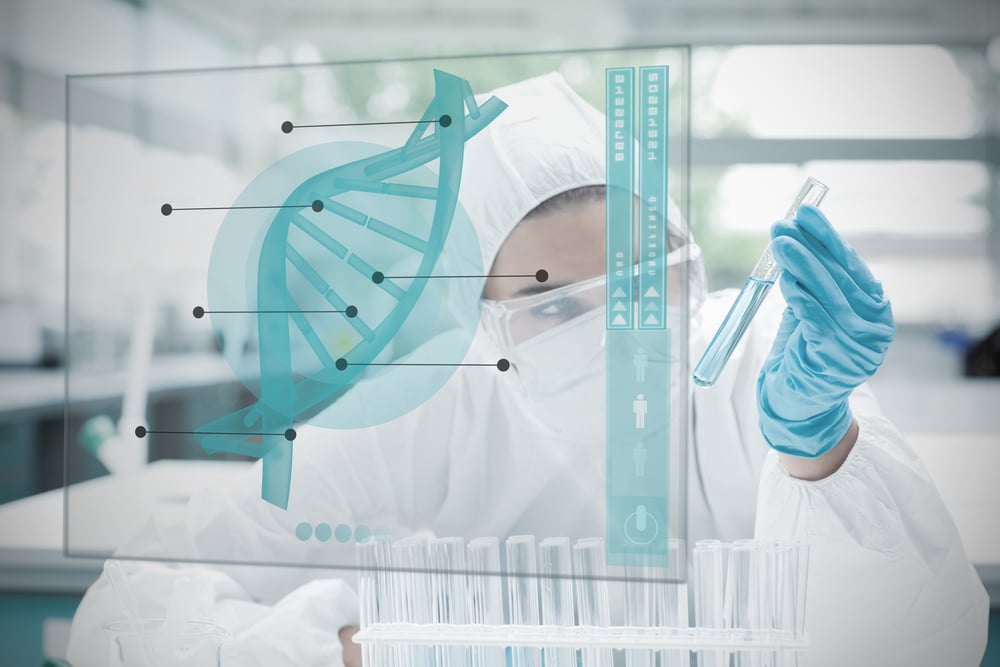The Importance of Genetic Testing and Cancer Prevention
Genetic testing has been around since the late 1950s, but recent medical advances have made it more relevant than ever. Often, the topic of genetic testing is fraught with controversy. The vast public, not only medical professionals, have strong feelings about it in one way or the other.
Some say that genetic testing can be used to prevent a wide gamut of diseases (as indeed, it already does), while others say that it is invasive and can cause more problems than it solves. Guilt, tension, and strained family planning are all possible negative results of genetic testing. However, the majority of the medical community agrees that genetic testing can be used wisely and ethically to help prevent disease, including specific types of cancer.
The History of Genetic Testing
Genetic testing took off in 1959, when it was discovered that a chromosomal analysis could be used to diagnose Down syndrome and other issues caused by chromosomal anomalies. This resulted in the development of prenatal genetic tests, which were done both by staining chromosomes so they could be counted and by collecting fetal cells from amniotic fluid.
In the 1980s and 1990s, scientists began mapping traits onto chromosomes, which allowed them to identify the genes responsible for several inherited medical conditions like Huntington’s disease, cystic fibrosis, and sickle-cell anemia. They understood that seeing as these diseases are linked to specific genes, if a person’s DNA shows a mutation for one of them, he or she is almost certain to develop the condition.
The year 2000 marked a milestone in genetic screening. A rough draft of the human genome sequence was published online, followed by a more comprehensive version three years later. Scientists could now perform genotyping. In other words, they could scan a person’s genome from single nucleotide polymorphisms (SNPs), which can be studied to assess one’s susceptibility to certain diseases.
Genotyping is much more cost-efficient than scanning a full sequence of DNA, and from this development came a new type of genetic testing: direct-to-consumer (DTC) testing. DTC tests are sold directly from company to consumer without going through a medical professional. These kinds of tests have been criticized by many in the medical community, who claim that the marketing is exaggerated and information might not be accurate. Additionally, there is no government regulation of DTC companies at this point.
Genetic Testing Controversy
Genetic testing is anything but a simple issue, regarding the technology behind it and the emotions it evokes. People who undergo genetic testing and find that they are a carrier of a certain disease may feel angry, depressed, and anxious. Genetic planning is now part and parcel of family planning, allowing both partners to be screened for potential birth defects and developmental disabilities in the fetus. This practice has strong supporters and equally strong naysayers. Furthermore, sometimes, genetic testing can create tension because the results may reveal information about the entire family and not just the individual who was tested.
From a medical perspective, the benefits of genetic screening far outweigh the potential emotional damage that it can cause. Genetic testing, when performed by a medical professional, has the potential to save lives. It can allow people to take preventative measures against certain diseases. When it comes to cancer, the second-leading cause of death in the United States, genetic testing can be invaluable.
Genetic Testing and Cancer Prevention
According to a recent international study led by Queen Mary University of London, screening whole populations for breast and ovarian cancer gene mutations could prevent millions of cases of breast and ovarian cancer.
BRCA1 and BRCA2 are two genes that are known for causing breast and ovarian cancer. They cause 10-20% of ovarian cancer cases and 6% of breast cancer cases. If mutation carriers can be determined before the advent of the disease, people can take preventative action, either through increased screenings, drugs, or surgery. Moreover, if someone discovers that they are a carrier of one of these genes, they can inform their family members, who can take their own preventative measures.
Today, global clinical guidelines recommend genetic testing only for high-risk women, but the fact is that over 50% of BRCA carriers don’t meet the criteria of “high-risk.” Researchers in the above study compared the costs-effectiveness and health impact of BRCA testing in the general population with the current recommendations of high-risk testing. They took several factors into account, including medical costs incurred from genetic testing, prevention, treatment, and lost income from inability to work. They found that testing on a large scale is cost-effective in high and upper-middle income countries like the United Kingdom, United States, Netherlands, China, and Brazil. Not only would expanding the testing base be cost-effective, but the study estimates that it can prevent approximately 2500 breast cancer cases and 375 ovarian cancer cases per million women.
While genetic testing is not without its challenges and critics, the medical community overwhelmingly believes that it has the potential to prevent diseases and ultimately save lives. In the case of breast and ovarian cancer in particular, expanding genetic testing to cover a larger population can result in a significant decrease of cases.


